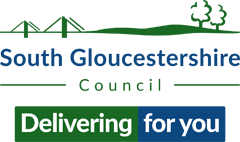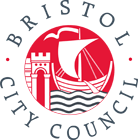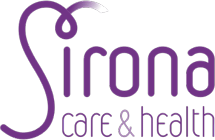Projects and activities
In order to achieve its aims and objectives, MOVE HIT is focusing on the following core projects:
Short-term 1-3 years
Health and social care are often planned independently, and care across primary and secondary care for Parkinson’s is disjointed. There are marked geographical variations in Parkinson’s service provision across the BNSSG region. MOVE HIT will provide the catalyst to draw together existing expertise, resources and services and ensure the provision of an equitable, integrated health and social care service for Parkinson’s across the region. Through strategically integrating the clinical service, research and teaching, it is anticipated that our service model will provide the benchmark for Parkinson’s services nationally. In order to achieve this, initial work will include:
Service mapping and design
An initial project for the HIT will be identifying the Parkinson’s population across the region and mapping the current healthcare and related social-care needs and pathways. This will involve three strands of work:
- Neuronavigator (Neurological Commissioning Support) will be used to identify and undertake risk stratification of the Parkinson’s population in the region. This will model levels of care required, assisting with planning so resources can be targeted to be most effective.
- A mapping process will be undertaken to identify and geographically localise the health and allied health specialist movement disorder services that currently exist in the BNSSG region.
- A service evaluation will be conducted using patient reported experience measures (PREMS) in the form of questionnaires and focus groups. The GP network will be used to disseminate questionnaires in-order to capture experiences of those living in the three geographical areas of BNSSG. This will determine services currently received in each area, those required and those desirable.
Once we have mapped current service provision, we will work with commissioners and service providers to develop an integrated model of health and social care that is based on the choice model for long-term conditions (DoH, 2007). This will enable us to benchmark and establish standards of excellence and cost effectiveness for practice across the region.
Key to service redesign will be the development of a Parkinson’s and Other Movement Disorders Clinical and Clinical Research Facility at the Southmead site during 2014. This facility will provide the hub, for our proposed, hub and spoke organizational model. During the second half of this period, we should start to see benefits of this model:
- Streamlined referral routes and access to services
- An integrated care agenda – delivering coordinated care pathways and continuity of care across disciplines
- Reduction in acute hospital admissions due to PD complications
- Reduction in mean length of stay for patients with co-morbid PD
- Greater education / empowerment of patients to encourage self-care
A centre for excellence in Parkinson’s research
- We will continue to develop our research portfolio of NIHR and DeNDRoN studies, encompassing investigator-led and commercial investigations that focus on unmet symptom needs in PD and disease modification.
- We will work to ensure that all movement disorder patients have access to appropriate clinical studies, and that research is fully integrated with clinical care. We will raise awareness about recruiting studies through Parkinson’s UK branches, our MOVE-hIT website, DeNDRoN and the GP network. We will develop and maintain our research register and PRO-DeNDRoN.
- MOVE-hIT will further develop collaborations between preclinical and clinical researchers at UoB and UWE. In particular, we will pursue opportunities in the areas of robotic devices to assist rehabilitation, and also in developing computer motion tracking methods to assess a patient’s movement disorder and more reliably gauge response to treatment.
Movement disorders education and training
We will establish Parkinson’s training packages specific to relevant staff groups in health and social care, with a particular focus on GP education. A professional’s section will be created on the MOVE-hIT website, which will include training resources and publicise educational events.
Medium term 3-6 years
Developing and maintaining a Parkinson’s service of clinical excellence
- Once clear pathways for Parkinson’s health and social care provision have been agreed and embedded in practice, and the Parkinson’s Clinical and Clinical Research Facility (“hub”) is established at the Southmead Site, the next stage will be to set up multidisciplinary clinics. An agreed model for such clinics will be piloted at the “hub”. PROMS and PREMS will be used to audit this model, and any changes will be made prior to it being rolled out to satellite clinics (the spokes) across the BNSSG region. The key to the success of this hub and spoke, multi-disciplinary PD care model is that services are equitable and are replicated at each spoke clinic.
- We will develop patient education, which will be delivered in a group setting as part of a continuous rolling programme, with programmes designed for patients at different stages of Parkinson’s (Diagnosis phase, Maintenance phase, Complex phase and Palliative phase).
- We will develop further specific aspects of the Parkinson’s care pathway by fully integrating with other specialties. These will include, but are not limited to:
– Working with palliative care specialists to improve end of life care.
– Working with mental health and dementia teams to improveaccess topsychiatric and dementia services for patients whenrequired. - Improved support for carers and family members will be a goal during this stage. Focus groups will be held throughout the region to identify how this can best be provided, and we will work with our health partners and charities to meet these needs.
- We intend to develop the Parkinson’s Clinical and Clinical Research Facility to incorporate an advanced treatment centre for motor complications, whereby we will receive patients from the whole of the South West for assessment and initiation of advanced therapies for motor-complications, including duodopa and apomorphine. This service will be modelled on the design of our existing and highly successful DBS service.
Regular audit and service evaluation will be paramount throughout, but we anticipate that as a result of the above we will:
- Deliver individualised, high quality care pathways, addressing Parkinson’s motor and non-motor symptom needs, from the point of symptom onset and diagnosis, through to end of life care.
- This will be delivered at the right time, in the right setting, in the most effective and cost efficient way.
A centre for excellence in Parkinson’s research
- We will continue to provide regular progress reports regarding our studies and DeNDRoN portfolio recruitment figures with all interested parties, including patients.
- We will publicise results of our current portfolio studies, and will apply for NIHR funding to conduct further clinical research.
- The Clinical and Clinical Research Facility will provide the space to expand our research programme and increase recruitment. This will allow for and facilitate full integration of clinical care with a pre-clinical and clinical PD research programme encompassing all aspects of PD. Specifically, based upon our GDNF trial, if efficacious, we will be the lead site for a phase III multi-centre study, plus begin to develop phase II trials for growth factor therapies in Progressive-Supra-Nuclear-Palsy (PSP) and Multiple System Atrophy (MSA).
- We will take patient involvement in research to a new level by facilitating our PPI group to conduct their-own research study.
Movement disorders education and training
- Formal rolling education programmes will be conducted at the Clinical and Clinical Research Facility. Competencies will be determined, and sessions for primary and secondary care providers will be provided by in-house and invited speakers modelled on the highly successful Parkinson’s Academy.
- We will offer movement disorders placement-training opportunities to PhD students, PD Nurses and clinicians.
- The scope of the South West and South Wales Basal Ganglia Club will be widened to encourage further collaboration between pre-clinical and clinical scientists and clinicians.
Longer term 6-10 years
It is anticipated that by this stage we will have established an equitable, integrated health and social care service for Parkinson’s across the region, and that our proposed South West advanced treatment centre will be equally successful. It is hoped that we will be nationally recognised as providing an integrated clinical, research and teaching Parkinson’s service of excellence.
Developing and maintaining a Parkinson’s service of clinical excellence
- Through the regular use of PREMS and PROMS, as well as data collected pertinent to meeting specific CQUIN goals, we envisage that we will have published evidence to support the success of our Parkinson’s pathway and service model. It is envisaged that this will provide the benchmark for Parkinson’s services nationally.
- Service evaluation using patient outcome and experience measures will continue. We will maintain the level of service established, and as new trends arise, we will adapt our patient pathways or service model to meet changing needs, opportunities and challenges.
- As the population over 6 increases, so will the Parkinson’s population. Thus, we will repeat our risk stratification analysis of the Parkinson’s population in the region. A small increase in resources may be required to meet this growing population. However, with a well-established and sustainable service, we will be able to assess developing disease reversing and / or slowing innovations in a “real-world” setting and assess the clinical and cost-effectiveness benefits. Moreover, patients with Parkinson’s and their carers will be far better educated and engaged in managing their own condition by this stage, and we would look to establishing self-care hubs where people with Parkinson’s can gather together for socialising and learning.
Developing and maintaining an other movement disorders service of clinical excellence
During the 6-10 year period, having evolved our whole systems approach to redesign health and socal care services around patient pathways for Parkinson’s, we will repeat and roll-out a similar programme of activities (as described in the short and medium term sections above) for the less common but devastating atypical Parkinsonian disorders (PSP, MSA and corticobasal degeneration – CBD). Likewise, a similar but disorder-specific approach will be repeated for BNSSG care pathways for tremor (essential, dystonic and midbrain tremor) and dystonia.
A centre for excellence in Parkinson’s research
- Our research portfolio and NIHR footprint of pre-clinical, clinical and non-medical intervention studies will have developed to equal those of the largest Parkinson’s research centres nationally / internationally.
- During this period we will work towards establishing a clinical trials unit, where we would design, co-ordinate and analyse results of multi-centre studies.
A centre for excellence in other movement disorders research
- Building on the success of the programme of functional neurosurgical research in tremor and dystonia at NBT, we will over this 6-10 year period develop medical and other nonsurgical interventional trials for tremor and dystonia, as well as develop more advanced computer motion movement tracking methodology to greater understand a patient’s involuntary movements and more reliably monitor treatment response.
Movement disorders education and training
- The established rolling education programmes for all staff involved in Parkinson’s care will continue, will be regularly audited and altered according to changing needs.
- As patients will now be better informed and educated, and there will be more patient led groups, we will develop a competency based training programme for patients and carers who are interested in leading such activities.
- Building on what we have learnt from evolving our education programme in Parkinson’s, we will establish training packages for the Other Movement Disorders specific to relevant staff groups in primary, secondary and tertiary health care and social care.






